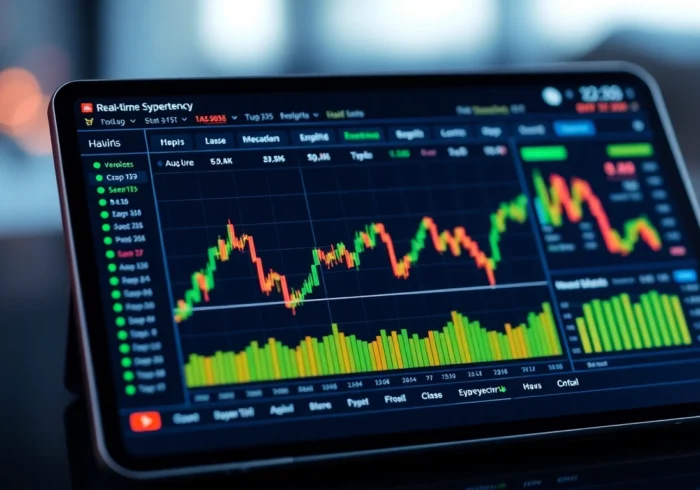Analyzing Current Trends in Real Estate Investment News
In the ever-evolving landscape of global finance, staying informed about the latest moves in real estate investment is crucial for discerning investors. The recent trends in Real Estate Investment News reveal a complex interplay of macroeconomic factors, sector-specific developments, and technological innovations. Understanding these trends enables investors to identify emerging opportunities and mitigate potential risks in a volatile environment. Today’s real estate market is not just influenced by local factors but is profoundly shaped by worldwide economic currents, monetary policies, and geopolitical shifts. This article delves deeply into these influences, practical strategies for navigating the current market, and what future developments may hold for real estate investors.
Global Economic Influences Shaping Real Estate Markets
Global economic trends remain the primary backbone impacting real estate markets worldwide. Recently, market participants have been attentive to shifts such as the rebound of stock markets, fluctuations in currency values, and commodity prices—particularly gold and oil. For instance, the recent record highs in gold prices, reaching nearly $3,502 an ounce, reflect investor flight to safe assets amid geopolitical tensions and inflation concerns. Similarly, the marginal gain in European shares (up 0.17% on the STOXX 600) demonstrates cautious optimism despite macroeconomic uncertainties.
Moreover, the synchronization of stock market dynamics with currency movements signals the interconnectedness of global finance. The U.S. dollar, although dropping slightly ahead of upcoming U.S. labor data, remains a barometer of economic sentiment. These movements are often tied to broader monetary policy signals—such as expectations for rate cuts from the Federal Reserve—and influence capital flows into real estate. For example, a weaker dollar can foster foreign investment inflows into European and US real estate markets, especially in residential and commercial sectors seeking stability amid currency depreciation elsewhere.
In the context of international trade, rising commodity prices—like oil—affect construction costs and development feasibility, particularly in emerging markets. Weak Chinese data, indicated by slipping iron ore futures, signals potential slowdowns that can ripple through the global supply chain, influencing construction activity globally. Conversely, countries like Russia expanding oil and crude imports signal strategic markets that might see increased real estate development focused on energy infrastructure.
Key Indicators to Watch in Recent Property Investment News
Successful navigation of the current real estate landscape hinges on analyzing key market indicators. Some of the most telling signals include interest rate trajectories, inflation data, and capital flow patterns. Recent reports highlight that inflation in the U.S. is in focus, as gold prices surged, making it a useful hedge—indicating concerns about rising price levels impacting property affordability and mortgage costs. Additionally, the decline of the dollar after calls for rate cuts creates a favorable environment for cross-border investments, which can invigorate sectors such as commercial real estate and hospitality.
Another essential indicator is the trend in stock markets, which often serve as leading signals for real estate cycles. The recent mixed performance of global equities, with US stocks steady amid geopolitical tensions – notably after Trump-Fed tensions – underscores cautious investor sentiment. For instance, the drop in Wall Street and trading in cryptocurrency markets—such as Bitcoin hovering around key trendlines—reflects broader risk appetite and liquidity considerations.
Furthermore, activity levels in commodities, especially in key markets like China, have strong implications for the real estate sector. Weak data and stalled tariff negotiations have slowed certain infrastructure projects, impacting property demand in related sectors. Monitoring these indicators helps investors anticipate shifts, whether it’s a transition to growth in the industrial sector or caution in residential markets.
Impact of Interest Rates and Inflation on Real Estate Prospects
Interest rates and inflation are among the most potent drivers of real estate market health. Currently, global economic environments are characterized by expectations of rate cuts in the U.S., which historically stimulate property demand by reducing borrowing costs. The recent drop in the dollar aligns with hopes for lower rates, potentially encouraging more borrowing and investment.
Conversely, rising inflation, as evidenced by the record gold prices and US inflation data, can erode real estate value in real terms. Inflation increases construction and operational costs, squeezing margins for developers and landlords. However, inflation also makes tangible assets like real estate more attractive as hedges—especially in sectors like residential and industrial properties, where rental income can adjust with inflation.
In practice, savvy investors Many are now focusing on assets that can outperform inflation—such as logistics and data centers—that are benefiting from the digital economy’s growth. Understanding the interplay between interest rates and inflation informs strategic decisions—whether to lock in long-term financing or wait for more favorable market conditions.
Strategies for Navigating the Latest Real Estate Investment News
Analyzing Market Cycles and Timing Opportunities
Successful real estate investors leverage market cycles by identifying troughs and peaks to optimize entry and exit points. For example, the current uptick in certain market segments, like defense-related industrial properties supported by improved geopolitical stability, suggests potential investment windows. Using data analysis, investors can track indicators like vacancy rates, rent growth, and cap rates to time their moves effectively.
Leveraging News to Identify Emerging Hotspots
Emerging hotspots are often highlighted by infrastructural developments, policy shifts, or macroeconomic trends. For instance, China’s slowing data may trigger investors to look for alternative markets showing resilience, such as Southeast Asia or Eastern Europe. Additionally, the growth of e-commerce sectors spurs demand for logistics and warehousing real estate. Keeping abreast of such news helps investors position themselves proactively in expanding markets.
Risk Management Based on Current Market Reports
Risks include economic slowdowns, interest rate hikes, or regulatory changes. Implementing hedging strategies and diversifying holdings across sectors and geographies mitigates exposure. For example, with the recent geopolitical tensions and supply chain disruptions, focusing on sectors with long-term demand—like healthcare or affordable housing—may offer more stability. Regular review of market reports, macroeconomic data, and news sources sharpens risk management strategies.
Emerging Sectors and Assets in Real Estate Investment News
Growth of Commercial and Industrial Properties
The surge in logistics, data centers, and warehousing reflects broader economic shifts. Enhanced digital infrastructure and accelerated e-commerce adoption make these sectors highly attractive. For example, recent reports point to increased industrial development in strategic locations, driven by supply chain restructuring. Investors should monitor policy support and infrastructure investments that contribute to the growth of such assets.
Resilience of Residential Markets Amid Economic Shifts
Despite economic uncertainties, residential real estate often remains resilient, particularly in regions with strong demographic fundamentals and limited supply. The recent record high in gold prices and inflation concerns reinforce demand for stable, income-generating assets. Urban centers with robust employment, such as London, continue to attract domestic and international buyers, providing opportunities for rental yields and appreciation.
Innovative Real Estate Tech and Its Influence on Investment Decisions
Technological advancements, including AI integration, virtual tours, and blockchain-based transactions, are transforming real estate investing. Meta’s reported exploration of partnerships to enhance apps exemplifies how social commerce tech is influencing property marketing and management. Embracing these innovations enables investors to access deeper data analytics, streamline transactions, and optimize portfolio performance.
Integrating Real Estate Investment News into Your Portfolio
Developing Data-Driven Investment Strategies
Data analytics underpin the ability to identify profitable opportunities. By synthesizing macroeconomic indicators, sector performance metrics, and news flows, investors can construct models predicting market turns. For example, tracking inflation trends alongside interest rate expectations informs decisions about locking in financing or diversifying into inflation-resistant assets.
Utilizing News Sources for Timely Decisions
Timeliness is critical—subscribing to leading financial news outlets and employing real-time alerts can give investors an edge. Accurate interpretation of economic releases, geopolitical developments, and policy announcements allows swift action, whether entering new markets or adjusting holdings. For instance, recent U.S. labor data impacts interest rate outlooks, directly influencing mortgage availability and property valuations.
Case Studies of Successful Real Estate Investments Driven by News Insights
One example involves an investor who anticipated the infrastructure boom in Southeast Asia following positive policy signals, resulting in significant appreciation in industrial real estate. Another case saw a hedge fund shifting assets to affordable housing in the UK after analyzing labor market improvements and demographic trends. These success stories underscore the importance of integrating news analysis into strategic planning.
Future Outlook and Trends in Real Estate Investment News
Predictions for Upcoming Market Movements
Looking ahead, experts anticipate continued growth in logistics and data center sectors driven by technology adoption. Conversely, potential interest rate hikes in the US or Europe could temporarily dampen transaction volumes. Emerging markets with demographic advantages may also see increased investment, especially if geopolitical stability persists.
Adapting to Regulatory and Economic Changes
Regulatory reforms—such as new zoning laws, tax policies, or foreign ownership rules—will shape future opportunities. Staying adaptable entails continuous monitoring of policy changes and engaging with legal and financial advisors to align investment strategies accordingly.
Technological Advancements Shaping Future Investment Opportunities
AI, blockchain, and big data will further refine market analysis and streamline transactions. Virtual reality enables immersive property viewing globally, broadening investor reach. Additionally, tokenization of real estate assets could democratize access, opening investment opportunities to a broader audience. Being at the forefront of these innovations will be key to maintaining a competitive edge.



